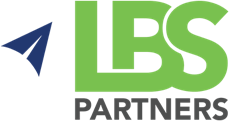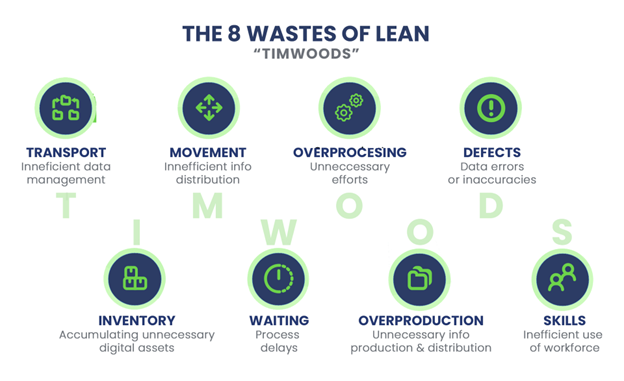Digital Waste – The Key Areas For Improvement
In the digital era, businesses are inundated with information, often leading to significant digital waste. This waste, spanning redundant processes, excessive data storage, and inefficient workflows, hinders operational efficiency and sustainability. Identifying and mitigating these areas of digital excess is crucial for organizations aiming to streamline operations and enhance productivity.
This article delves into the key aspects of digital waste, offering insights into how businesses can adopt leaner, more effective digital practices, thereby transforming challenges into opportunities for growth and innovation.
Understanding Digital Waste
Digital waste encompasses the inefficiencies and redundancies embedded in digital processes and data management within organizations. It includes unnecessary data storage, repetitive tasks, and inefficient use of digital resources that detract from productivity and operational efficiency.
Understanding digital waste involves recognizing these non-value-adding activities and their impact on business performance. By identifying areas of digital excess, businesses can streamline workflows, reduce costs, and enhance overall sustainability, setting the stage for a more effective and agile digital infrastructure.
Key Areas of Digital Waste
The 8 wastes of Lean we will discuss below are often referred to as TIMWOODS, an acronym that stands for Transportation, Inventory, Motion, Waiting, Overproduction, Overprocessing, Defects, and Skills.
Transport
In the realm of digital waste, the transport category highlights inefficiencies in the movement and updating of information across various platforms and systems. This includes the redundant tasks of re-entering the same data into multiple databases, transferring similar data between systems, and the unnecessary review of customer information before processing. Such practices not only consume valuable time and resources but also increase the potential for errors, leading to further inefficiencies and waste. Streamlining data transfer processes and integrating systems can significantly reduce this form of digital waste, enhancing overall operational efficiency.
Inventory
The Inventory aspect of digital waste refers to the accumulation of unnecessary digital assets, such as excessive files, emails, and duplicated reports. This clutter leads to difficulties in managing and retrieving essential information, resulting in inefficiencies and productivity losses. Addressing this waste involves decluttering digital spaces, ensuring that only relevant, necessary data is stored, and implementing effective data management practices to prevent future accumulation. This streamlining process aids in optimizing resource utilization and improving operational efficiency.
Motion
The Motion component of digital waste involves unnecessary movement of digital items, such as documents and emails, within an organization. This waste often results from poor filing systems and mismanagement, leading to time lost in searching and organizing files. Streamlining these processes through better digital organization strategies and adopting efficient document management systems can significantly reduce motion waste, enhancing productivity and reducing frustration associated with locating and handling digital information.
Waiting Time
Waiting Time in digital waste refers to delays encountered in processes, such as awaiting approvals, KPI reports, or interdepartmental communications. These delays can significantly hinder workflow efficiency, leading to increased operational costs and decreased productivity. Addressing waiting time involves streamlining communication channels, implementing faster approval processes, and enhancing cross-departmental collaboration to ensure information and decisions flow smoothly and swiftly across an organization. Reducing these waiting periods can lead to more agile and responsive operational practices.
Overprocessing
Overprocessing in digital waste refers to unnecessary efforts, such as duplicating information that’s already available or sending excessive emails to highlight issues. This redundancy not only consumes time but also diverts attention from value-adding activities. Streamlining communication and leveraging existing data efficiently can mitigate this waste, enhancing productivity and reducing the cognitive load on employees. Implementing systems to manage and prioritize emails and information can significantly cut down on over-processing, leading to a more focused and efficient work environment.
Overproduction
Overproduction in the digital context involves creating or disseminating information before it’s needed, leading to inefficiencies such as spending excessive time on non-essential tasks like elaborate document preparation. This waste can be curtailed by aligning document production with actual demand and enhancing employees’ proficiency with digital tools, thereby ensuring that efforts are concentrated on value-adding activities and not on premature or unnecessary outputs. Fostering a culture of efficiency and purpose in digital work can significantly reduce overproduction and its associated costs.
Defects
Defects in digital waste manifest as errors or inaccuracies in data due to inconsistent entries across different systems or incomplete documentation. These issues often result in rework and hinder seamless operation, affecting overall productivity and efficiency. Addressing defects involves enhancing system integration and data accuracy, ensuring consistent information flow and reducing discrepancies. Implementing robust data management practices and integrating systems can significantly minimize such defects, leading to more reliable and efficient digital processes.
Skills
The Skills category in digital waste highlights the underutilization or overutilization of employees due to bottlenecks or staff shortages, leading to inefficiencies and lost productivity. Optimizing workforce allocation by matching tasks with the appropriate skill levels and ensuring balanced workloads can significantly reduce this waste. This involves identifying areas where employees can be better utilized, providing training to enhance skills where necessary, and implementing more efficient work distribution mechanisms. By aligning skills effectively with tasks, organizations can maximize their human resource potential and improve overall operational efficiency.
The Role of Digital Transformation
Digital transformation is integral in mitigating digital waste by overhauling and enhancing business processes with cutting-edge digital solutions. This transformative approach not only addresses inefficiencies but also propels organizations towards a more agile, innovative operational model. By embracing digital transformation, companies can eliminate redundant processes, streamline data management, and optimize employee productivity, leading to significant improvements in efficiency and competitive advantage. This strategic shift towards digital optimization allows businesses to leverage technology effectively, ensuring sustainability and fostering a culture of continuous improvement and adaptation in the digital age.
Implementing a Digital Waste Audit
Implementing a Digital Waste Audit is a strategic approach designed to identify and address areas of inefficiency and redundancy in digital processes. This comprehensive evaluation involves scrutinizing various facets of an organization’s digital footprint, including data management, communication flows, and software utilization, to pinpoint unnecessary or outdated practices that contribute to digital waste.
The audit aims to uncover opportunities for streamlining operations, enhancing data accuracy, and improving overall productivity. By adopting a systematic and thorough auditing process, businesses can develop targeted strategies to eliminate digital waste, leading to more efficient, agile, and cost-effective operations.
This proactive measure is a critical step towards achieving digital optimization and sustainability in the modern business landscape.
LBS Partners utilizes a structured, step-by-step approach, tailored to identify and mitigate inefficiencies in digital processes.
The audit begins with a clear articulation of the necessity for digital transformation, focusing on enhancing customer experience, efficiency, and decision-making while outpacing the competition.
The next step involves delineating specific objectives that address these needs, ensuring they align with the broader strategic goals of the organization.
Subsequently, a thorough analysis of the existing digital capabilities is conducted to ascertain what needs transformation. This involves creating a capability map that visually represents the business’s operational building blocks, facilitating an in-depth review to identify areas requiring change and prioritization based on their impact on achieving the set objectives.
The audit then progresses to outlining the necessary changes, categorizing them into actionable initiatives, and sequencing these initiatives over a designated timeline.
This structured approach ensures a comprehensive evaluation of the digital landscape, leading to targeted improvements that enhance efficiency and productivity.
This framework provides a clear pathway for businesses to navigate through their digital transformation journey, ensuring a focused and effective approach to minimizing digital waste and optimizing operational performanc.
We Can Help
Addressing digital waste is not just about cutting costs; it’s about enhancing operational efficiency and embracing innovation. LBS Partners’ methodical approach to Digital Waste Audits offers businesses a clear roadmap to digital optimization, ensuring that every digital resource is aligned with your strategic objectives.
Take the first step towards optimizing your business’s digital environment by engaging in LBS Partners’ Digital Waste Audit. Begin your journey to digital excellence today and unlock new levels of productivity and innovation.



